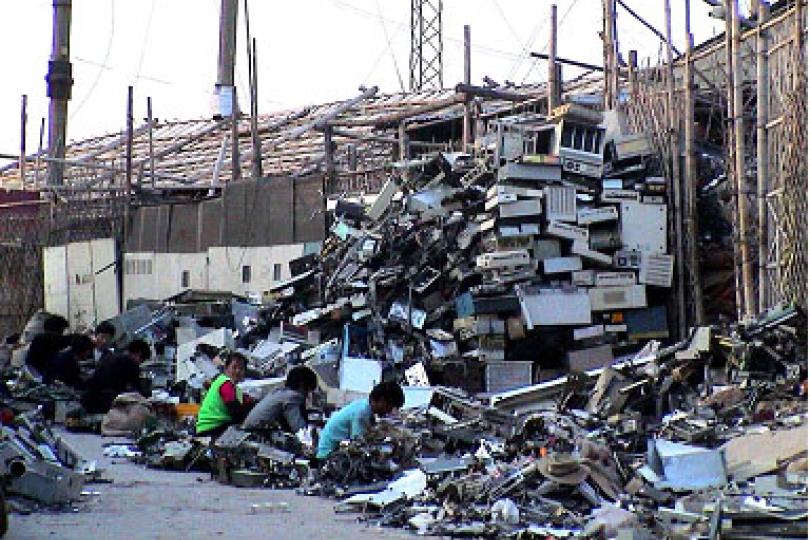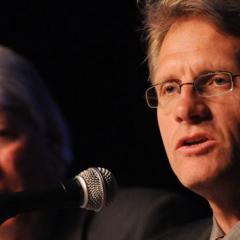Green Chemistry: A Scientific and Public Policy Challenge
Seventy-four billion pounds of industrial chemicals enter the U.S. daily. Many are toxic, and most will survive long-term to impact life on earth. Global chemical production will double in the next 24 years. As the Integrated Sciences Associate Director of UC Berkeley's new Center for Green Chemistry, 2002 Switzer Fellow Dr. Michael Wilson rides the cutting edge of the essential, emerging field called green chemistry.
Green chemistry tackles environmental and health issues at the point of design, at the molecular level. The goal is to create benign or less harmful chemicals to replace current toxic materials in a wide variety of applications. This represents a huge scientific challenge and a new way of looking at chemistry, the environment, and public health as well as public policy. According to Mike Wilson, "Green chemistry needs to be part of an environmental and social ethic, thinking about the kinds of problems (and solutions) we're delivering to future generations."
Over the past 50 years, we have come to expect a constantly expanding lifestyle with a relatively inexpensive pricetag: from gorgeous cars to bright, shiny apples; from gleaming wood paneling to the magical circuitry inside our cell phone, TV, iPod and computer. There is convenient, portable plastic for everything. We have learned to seek out the latest technological leap, to embrace the next time-saving wonder, and to be deeply grateful for medical advances. This is all good.
But scientists at the Environmental Protection Agency, the American Chemical Society and colleagues from around the world have discovered that these advances are, in fact, neither inexpensive nor benign. Many of the current materials and manufacturing processes we use to support our lifestyle come at a high cost in human and animal life on a global scale. And only a few examples cited by Mike Wilson are enough to tell us that we are failing in our attempts to control and dispose of these substances safely. Given the pace and scale of global chemical production, a preventative, interdisciplinary approach is needed that will prevent chemical pollution and exposures at the source: enter green chemistry.
Mike has been working on this issue for over ten years, most recently under a Switzer Leadership Grant. He is currently working under his second year of support from the Switzer Foundation in his new role as Integrated Sciences Associate Director and public interest research scientist at the Berkeley Center for Green Chemistry. Mike was recently named one of UC Santa Cruz's "50 most prominent and influential alumni," selected from among UCSC's graduates over the campus's 45-year history. Mike wrote his senior thesis on the social implications and ethics of genetic engineering, an assessment of emerging trends through the lens of policy, law and ethics - exactly the type of interdisciplinary work he is doing with green chemistry today. Mike works at the intersection of public policy, education and science, playing a leadership role in the adoption of green chemistry as an academic discipline and providing technical support to California agencies and lawmakers on chemicals policy reform. He spoke with Jerry Kay of Switzer Network News about his work in this emerging field. Click here for Mike's most recent interview with Switzer Network News.

